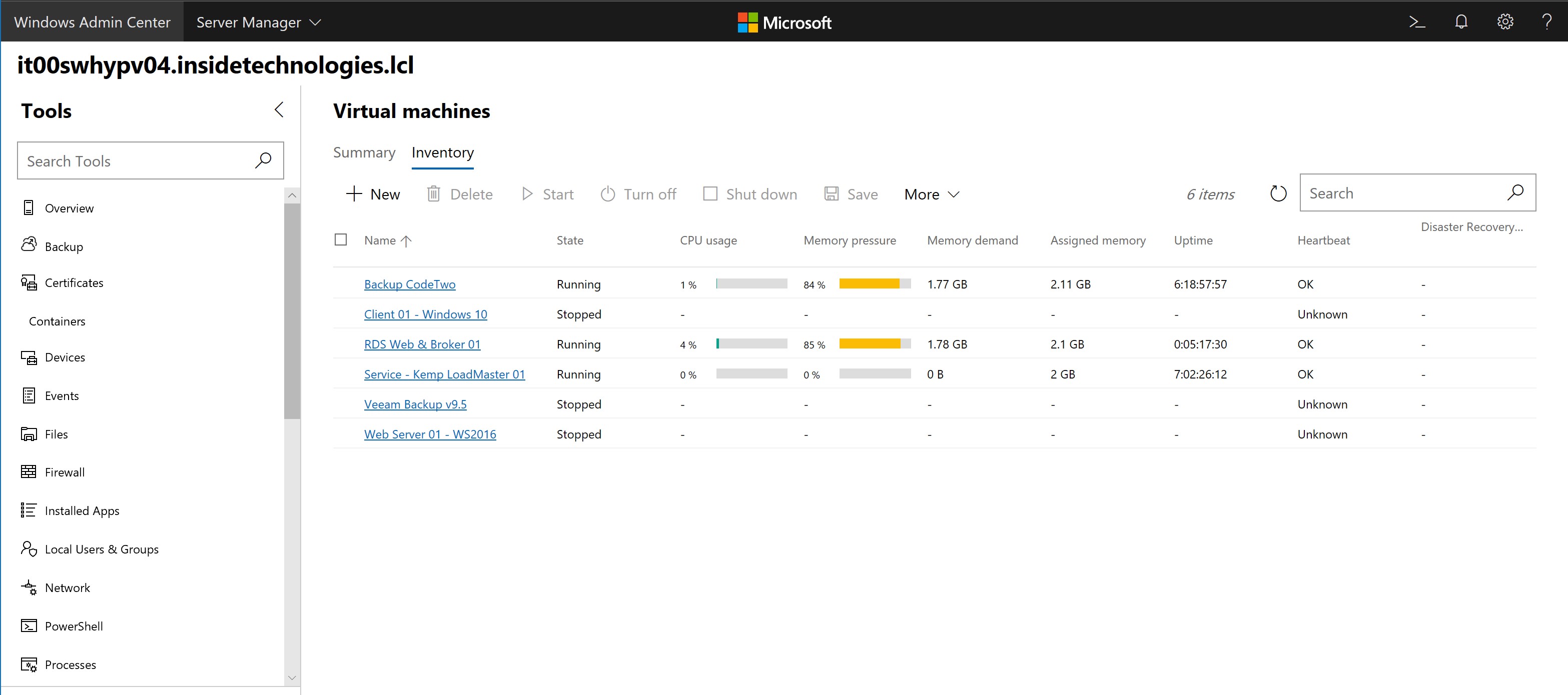Hyper V Server 2019 Sd Card

There,I have a Dell R440 server with a mirrored SD CARD module 16GB. I tried to run Hyper V 2019 Core from it, but at the boot s. 14 replies. Yup - that is just fine too. My older 13th Gen Dell's that don't have BOSS card options have a single large Raid10 and I just partition off a small amount. Under 100GB for sure. My Hyper-V 2016 (not Windows Server with Hyper-v role) install with updates is sitting at about 23GB. Hyper-V 2019 is at 15GB. So a 40GB partition is plenty.
So, I'm trying to pass-through my RX 590 onto a windows 10 guest. I followed the Microsoft DDA document and managed to mount my gpu to the guest but when I try starting it, it gives me the following error: The operation failed because the object was not found. After digging through the logs, I found a more detailed error message saying: Could not allocate the PCI Express device with the Plug and Play Device Instance path 'PCIPVEN1002&DEV67DF&SUBSYSC4111462&REVE14&288640B9&0&001A' because it is already in use by another VM.The thing is, I definitely don't have another virtual machine. I did enable IOMMU, ACS and SR-IOV beforehand.Here are my specs:MB: X570 TaichiCPU: Ryzen 3900XGPU1: RX 5700 XTGPU2: RX 590. UPDATE:I managed to successfully boot the VM with the graphics card by adding the following to the registery and typing bcdedit /set enable in Powershell.Registry key path (create it if not present): HKEYLOCALMACHINESOFTWAREPoliciesMicrosoftWindowsHyperVRegistry values:RequireSecureDeviceAssignment = 0 (REGDWORD)RequireSupportedDeviceAssignment = 0 (REGDWORD)Source:However, I get a code 43 after installing the latest driver for the RX 590.
The LG Super Multi Portable 8X DVD Rewriter with M-DISC™ Support, Model # GP60NS50 was released well before the Mojave OS was released and was only compatible with the Mac OS® X version 10.5.4 or Higher, Direct X 9.0 or Higher Operating Systems at the time. MacOS Mojave is a major update that introduces a range of new features like a Dark Mode, Desktop and Finder improvements, new apps, and a revamped Mac App Store, but unfortunately, the update drops support for a number of machines. Lg super multi drive install disc for mac.
I have never seen this happen on an AMD card. I tried installing an older driver and the Code 43 still persists.
I encountered this problem recently, and after several days of debugging, I've discovered the issue and fixed it.Drumroll please:After installing Hyper-V Server 2016, use an offline tool (like, say, Windows PE) to mount the SYSTEM hive of the new installation, and change the DWORD ControlSet001ControlBootDriverFlags from 0x04 to 0x1c. (You should probably change the ControlSet002 version as well for good measure, and you can bake the changes into your install.wim to avoid having to do this after each install.)(Because of course it takes a week and a kernel debugger to figure out that it just requires a two-bit change in an obscure and thoroughly undocumented bitfield.)Here's why.The Windows boot loader uses built-in UEFI routines to find the Windows install, and loads the kernel and boot drivers into RAM prior to calling ExitBootServices. Once it has done that and passed control to the kernel, the kernel cannot access the boot volume unless the appropriate drivers are already present in RAM.Here's the kicker, though: winload.efi is not complex enough to enumerate the hardware and determine what drivers are actually required. In older versions it would load only things set to Boot Start. However, loading extraneous drivers incurs a performance penalty, and as Windows started supporting more classes of boot devices, a better system was needed.Enter the BootFlags value on individual drivers and the system wide BootDriverFlags value. If (BootFlags & BootDriverFlags)!= 0, the driver will get loaded even if it isn't set to Boot Start.
Each bit in the value is supposed to correspond to a different type of hardware, so the BootDriverFlags value sets which types of hardware can be booted from.When this mechanism was introduced, Bit 3 was designated for USB boot devices, but booting from USB devices was unsupported in standard Windows. The Hyper-V Server 2008 R2 version added specific support for booting from USB by setting this value to 0x04, and this value has been set in every version of Hyper-V Server released since.The general improvements made since then to support the Windows To Go feature mean that you don't have to use the boot-to-VHD trick recommended for previous versions of Hyper-V Server installed on USB devices. However, they also change the meaning of the BootDriverFlags value. USB 3 devices have been given a separate bit, and SD cards specifically have been given yet another bit.In the 2016 version, this means that a value of 0x04 now enables booting only from USB2 disks that are not SD cards. All versions of Server 2016 except Hyper-V Server ship with the default value of 0x1c, which enables USB2, USB3, and SD card boot; however, the value of 0x04 is still set in Hyper-V Server, because it was added as an override in the image build process for the 2008R2 version. Sims 3 baby stuff mods.
Instead of adding a feature, though, this value now removes it.This explains why some previous solutions to this problem recommended disabling USB3 and booting from a USB stick instead of the SD card: this would force the category of the boot device to be something still covered by the now-more-limited definition of the 'USB' bit in BootDriverFlags.